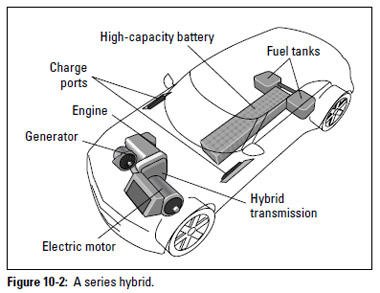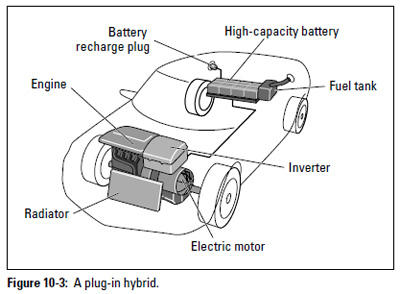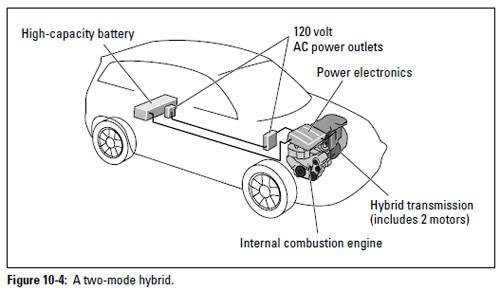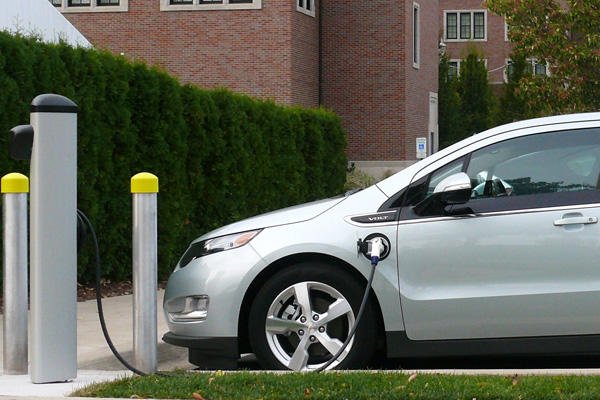Series Hybrids
A series hybrid (see Figure 10-2) uses a gasoline or diesel ICE, coupled with a generator, to generate electricity but not to drive the car. The engine can send the electric current directly to the electric motor or charge a large battery that stores the electricity and delivers it to an electric motor on-demand. The electric motor propels the vehicle, using its power to rotate a driveshaft or a set of drive axles that turn the wheels.

|
Plug-In Hybrids
Because plug-in hybrids (see Figure 10-3) feature larger batteries that can be charged at any ordinary 110-volt electrical socket, they have the capacity to extend the ability of the electric motor to drive the car farther without the need for starting the ICE and therefore substantially increase the vehicle's fuel efficiency. Estimates have ranged as high as 100 mpg!
Some technologically savvy individuals have adapted their hybrid vehicles into plug-in hybrids, and automakers are in the process of developing and producing them (sometimes in cooperation with major utility companies). The development of new, smaller, high-capacity lithium-ion batteries that can be recharged many times is the key to making plug-in hybrids available to the general public. Estimates are that plug-in hybrids equipped with these more powerful batteries will have a range of as much as 125 miles before the charge is depleted and the vehicle reverts to standard hybrid mode.

|
Eco-Logic: The main environmental problem with plug-in hybrids is that the electric current they draw is usually generated by utility companies powered by fossil fuels. The good news is that some major chains have committed to establishing charging stations powered by solar panels or wind energy, and many hybrid owners are willing to install solar panels to recharge these vehicles at home. Plug-in hybrids charged by commercial sources of electricity or solar panels will be less dependent on the ICE, but will still need it for long trips, climbing hills, and so on. Future hybrids may use a small fuel cell to make electricity from hydrogen, which would mean the ICE would have to run even less frequently. There's more about plug-ins and fuel cells later in this chapter.
Caution: Although instructions are available for converting conventional hybrids into plug-in hybrids, doing so yourself will void your car's warranty.
Two-Mode Hybrids
Two-mode hybrids (see Figure 10-4) may be the key to a competitive place for the U.S. in the hybrid market. Instead of the large storage battery found on conventional hybrids, two-mode hybrids use smaller batteries and two electric motors located inside an automatic transmission with two sets of gears— one for the ICE and the other to amplify the power of the electric motors. The transmission can function as a continuously variable transmission (CVT), as well. In one mode, at lower speeds, the vehicle can run with one or both electric motors, with or without the ICE, or on the ICE alone. At higher speeds, the second mode kicks in, and the ICE runs continuously in its higher gear ratios.

|
From Auto Repair for Dummies, copyright © 2009 by Wiley Publishing, Inc., Indianapolis, Indiana. Used by arrangement with John Wiley & Sons, Inc.










